I still remember the day I brought home my first jade plant. It sat proudly on my windowsill, its plump leaves gleaming in the sunlight. I was so sure I’d do everything right. Six months later, I was frantically googling “why is my jade plant dying?” as its once-firm leaves shriveled and fell.
If you’re reading this, chances are you’ve been there too. Or maybe you’re trying to avoid my mistakes altogether. Smart move!
Jade plants (Crassula ovata) have a reputation for being nearly impossible to kill. And while they are indeed hardy, this reputation leads many of us to make critical errors in their care. These beautiful succulents can live for decades – some even become family heirlooms passed down through generations. But only if we avoid some common pitfalls.
In this guide, I’ll walk you through the 10 most common mistakes people make with jade plants. I’ve made most of them myself, and I’ve helped countless friends rescue their struggling jades. Let’s turn those brown thumbs green!
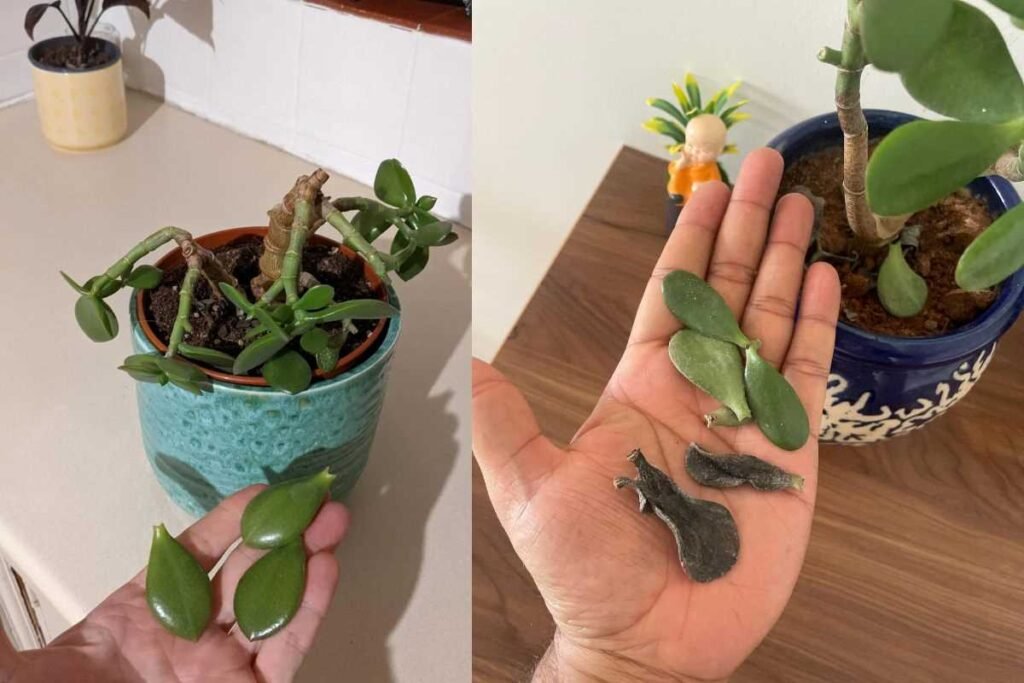
Table of Contents
Mistake #1: Overwatering Your Jade Plant
If there’s one thing that kills more jade plants than anything else, it’s overwatering. I know the temptation – you love your plant, and giving water feels like giving care. But jade plants are succulents. They store water in those plump leaves and stems. They’re desert plants at heart!
When I first started growing jade plants, I watered mine every few days. Big mistake! The soil stayed constantly moist, and soon the roots began to rot. The leaves turned yellow, then black, and started falling off. By the time I realized what was happening, I had to take drastic measures to save it.
How to Avoid Overwatering:
The right way to water jade plants is to let the soil dry out completely between waterings. This might mean watering only once every 2-3 weeks in winter and once a week in summer. I stick my finger about an inch into the soil – if it feels dry, I wait a few more days just to be sure.
When you do water, do it thoroughly. I take my jade to the sink and let water run through until it comes out the drainage holes. Then I let it drain fully before putting it back in its spot. This way, the roots get a good drink but don’t sit in water.
Signs you’re overwatering include:
- Soft, mushy leaves
- Leaves that fall off with a slight touch
- Black spots on leaves
- Mushy stems
- A moldy smell from the soil
Remember: jade plants can recover from underwatering much easier than overwatering. When in doubt, wait another day.
Mistake #2: Using the Wrong Soil
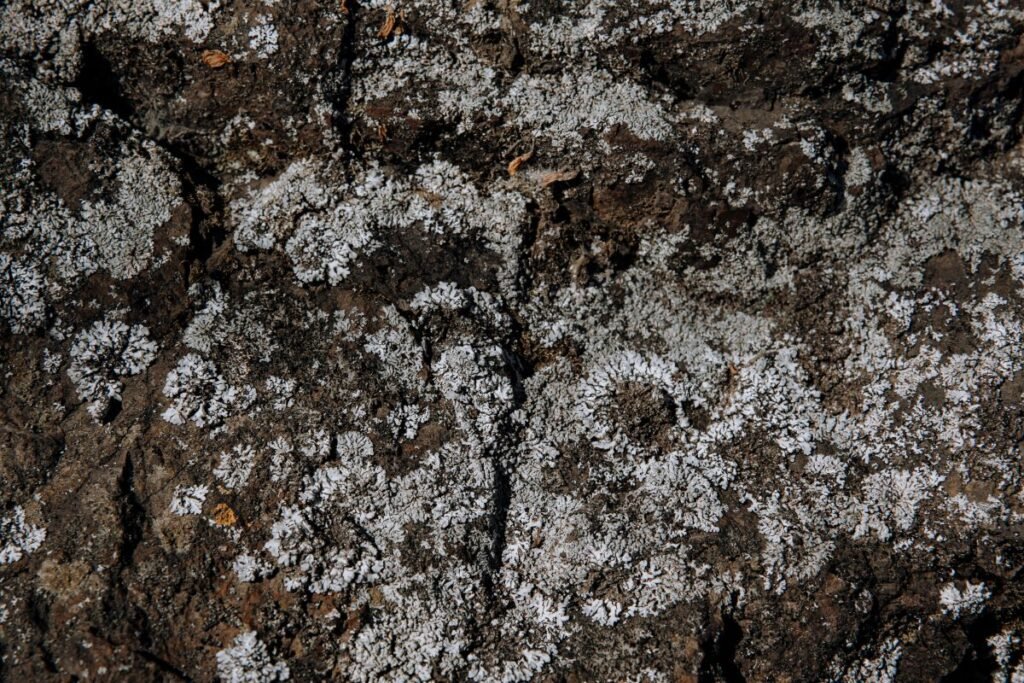
I once replanted my jade in regular garden soil I had left over from my tomato plants. Within weeks, it was showing signs of stress. The soil stayed wet for days after watering, and the plant started looking sad.
Jade plants need fast-draining soil. Regular potting soil holds too much moisture, which leads right back to our first problem – overwatering and root rot.
How to Avoid Using Wrong Soil:
The ideal mix for jade plants combines regular potting soil with materials that improve drainage. My go-to recipe is:
- 2 parts regular potting soil
- 1 part perlite
- 1 part coarse sand or small gravel
This mix allows excess water to drain quickly while still providing nutrients the plant needs. You can also buy pre-made cactus or succulent soil, which works well for jade plants.
When repotting, I gently remove as much of the old soil as I can without damaging the roots. Then I place the plant in its new pot with fresh soil mix. I wait about a week before watering after repotting to give any damaged roots time to heal.
The right soil makes all the difference. Your watering routine can be perfect, but if the soil holds too much moisture, your jade plant will still suffer.
Mistake #3: Insufficient Light
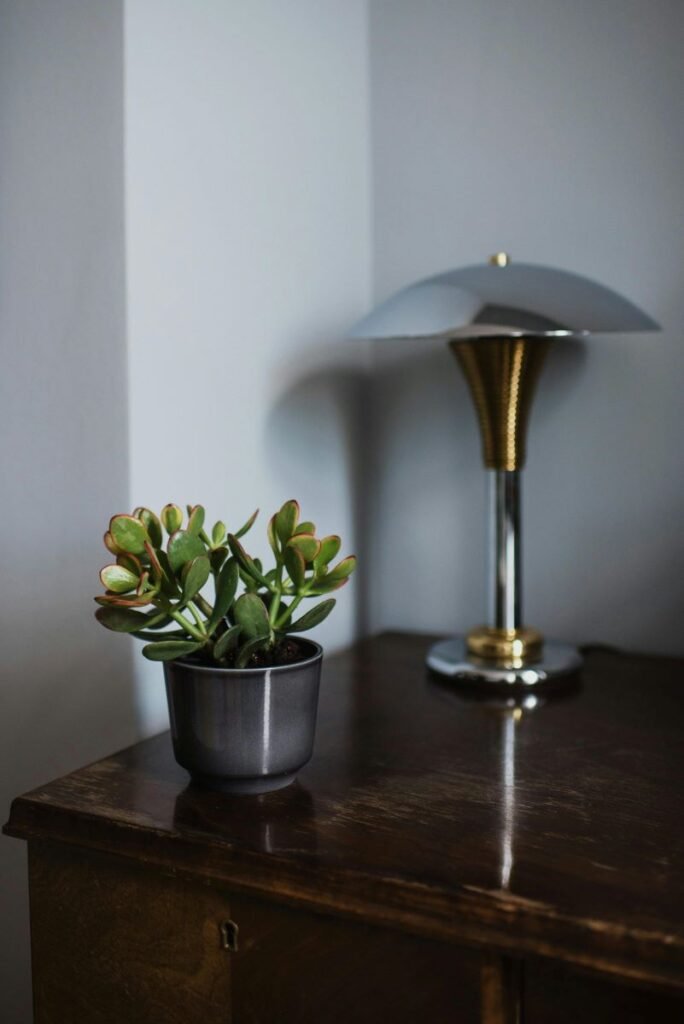
“It’s a houseplant, so it must like shade, right?” Wrong! This was my thinking when I first put my jade plant on a bookshelf far from any window. It survived, but it was sad – leggy, with spaces between leaves and a pale color.
Jade plants need bright light to thrive. In their natural habitat, they get plenty of sun. Without enough light, they stretch toward the nearest light source, becoming leggy and weak.
How to Avoid Light Problems:
The best spot for a jade plant is near a south or west-facing window where it gets at least 4-6 hours of bright, indirect light daily. Some direct morning sun is beneficial, but harsh afternoon sun can sometimes burn the leaves, especially if your plant isn’t used to it.
If your jade is getting leggy (long stems with widely spaced leaves), it’s telling you it needs more light. Move it to a brighter spot gradually to avoid shock. I like to move mine about a foot closer to the window each week until it’s in its final spot.
During winter in northern climates, jade plants may not get enough natural light. If your plant starts looking sad during winter, you might need to supplement with a grow light. I use a simple LED grow light on a timer to give my jade plants the light they need during dark winter months.
A jade plant in proper lighting will have a compact growth habit with leaves that are close together on the stems, and the leaves will often have a reddish tinge on the edges – a sign of a happy plant!
Mistake #4: Wrong Temperature Conditions
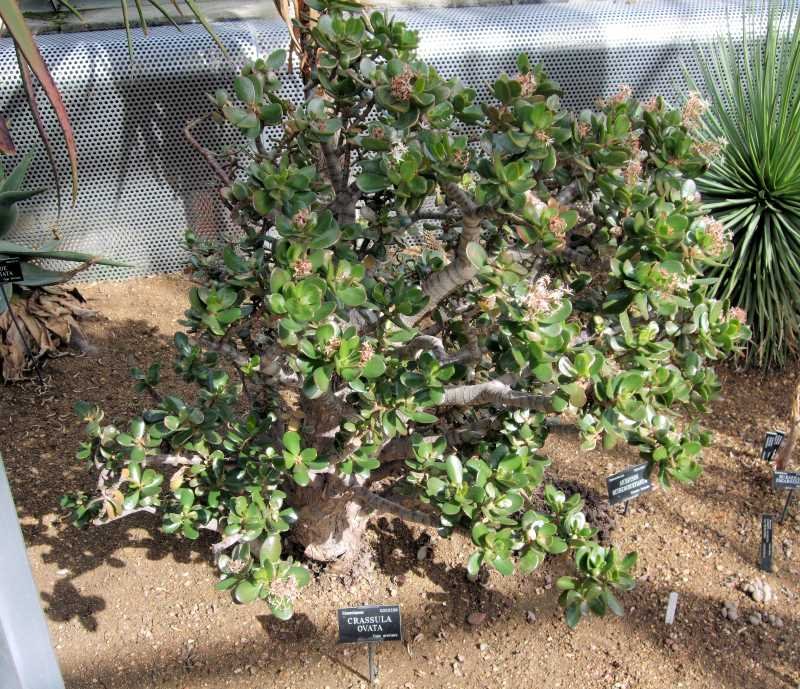
“It’s a succulent, so it must love heat all the time!” This is another misconception. While jade plants do enjoy warm temperatures during the growing season, they actually prefer cooler temperatures in winter.
I once kept my jade plant near a heating vent in winter. It dropped leaves and looked stressed, despite regular care. The constant warm, dry air was not what it needed.
How to Avoid Temperature Problems:
Jade plants prefer temperatures between 65-75°F (18-24°C) during the day and around 50-55°F (10-13°C) at night. They can tolerate temperatures down to about 40°F (4°C) for short periods, but prolonged cold will damage them.
Keep jade plants away from:
- Heating vents
- Radiators
- Air conditioning units
- Cold drafts from doors or windows
The temperature change between day and night actually helps jade plants develop that beautiful red tinge on the leaf edges that many people love.
In winter, a slight drop in temperature helps the plant enter a semi-dormant state, which is natural and healthy. This dormancy period is important for the plant’s growth cycle. Just make sure it doesn’t get too cold – below 40°F (4°C) can cause frost damage.
Mistake #5: Ignoring Pest Problems
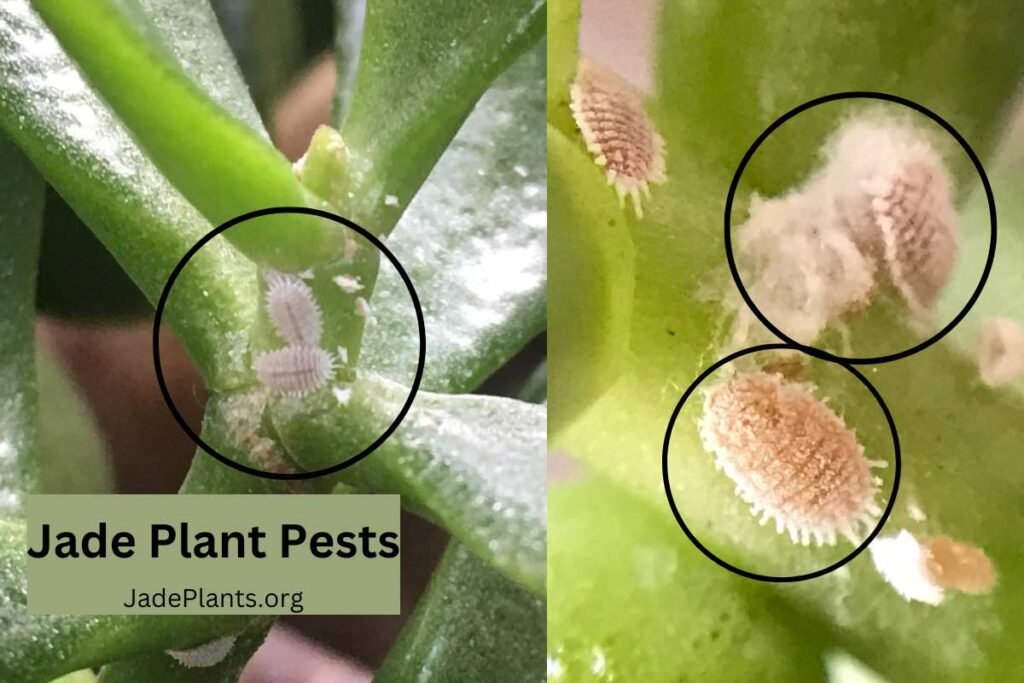
“Succulents don’t get pests!” Oh, how I wish this were true. I neglected to check my jade plant regularly and suddenly noticed tiny white spots moving on the stems. Mealybugs had set up camp, and getting rid of them took weeks of diligent treatment.
While jade plants are somewhat resistant to pests compared to some other houseplants, they’re not immune. The most common pests that attack jade plants are:
- Mealybugs
- Spider mites
- Scale insects
- Aphids
How to Avoid Pest Problems:
Prevention is the best medicine. I inspect my jade plants weekly, looking under leaves and at stem joints where pests like to hide. I also keep my jade plants separate from new plants for a few weeks to ensure no pests spread.
If you spot pests:
- Isolate the affected plant immediately
- For small infestations, dab the bugs with alcohol on a cotton swab
- For larger problems, spray with insecticidal soap or neem oil
- Repeat treatments weekly until the pests are gone
- Check all your other plants too
One thing I’ve learned: catching pest problems early makes them much easier to solve. A few mealybugs can become hundreds in just weeks if left untreated.
Some pests, like spider mites, thrive in dry conditions. Occasionally misting the air around your jade plant (not directly on it) can discourage these pests. Just don’t do it too often, as jade plants don’t like high humidity.
Mistake #6: Improper Pot Size
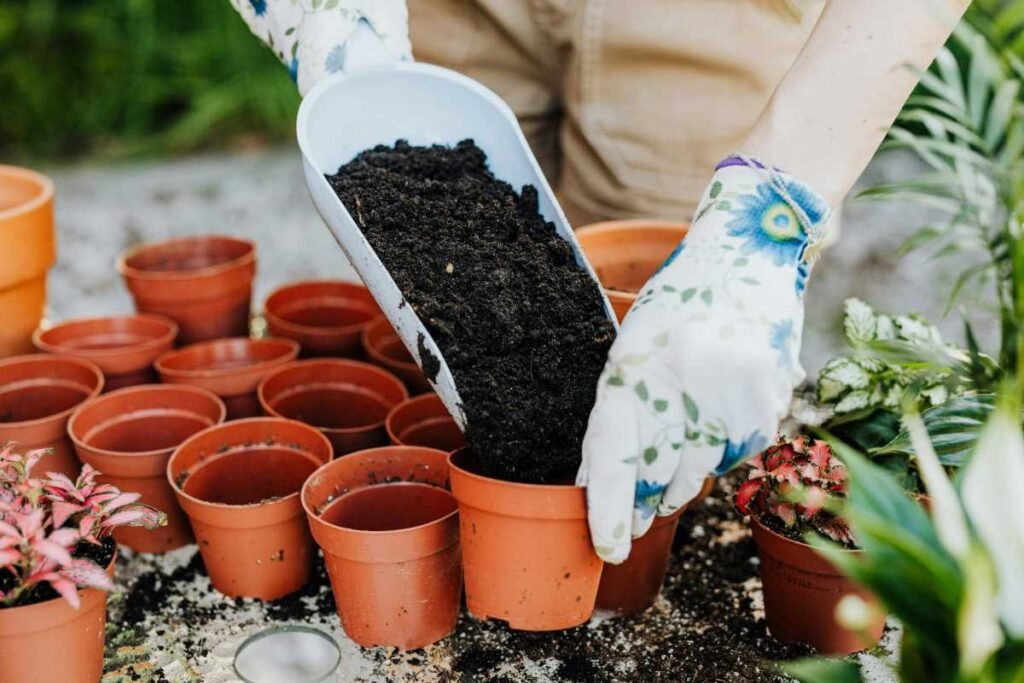
When my jade plant started growing well, I thought I was doing it a favor by putting it in a much larger pot. “Room to grow!” I thought. But instead of thriving, it just sat there, barely growing at all for months.
Jade plants actually prefer to be slightly root-bound. A pot that’s too large holds excess soil and water, which can lead to root rot. On the other hand, a pot that’s too small can restrict growth and require constant watering.
How to Avoid Pot Size Problems:
Choose a pot that’s just 1-2 inches wider than the root ball of your jade plant. When repotting, move up gradually in pot size.
Signs your jade needs repotting include:
- Roots growing out of drainage holes
- Water running straight through without being absorbed
- The plant becoming top-heavy and tipping over
- Growth slowing despite good care
I repot my mature jade plants every 2-3 years, while younger plants may need yearly repotting as they grow. The best time to repot is in spring or early summer when the plant is actively growing.
Always make sure your pot has drainage holes! No exceptions. Even with perfect watering habits, a pot without drainage is asking for trouble.
Mistake #7: Improper Fertilizing

“Feed it often for better growth!” This was my thinking when I started using regular houseplant fertilizer on my jade every time I watered. The result? Soft, leggy growth and eventually salt buildup in the soil that damaged the roots.
Jade plants are not heavy feeders. In fact, they often do better with less fertilizer than most people think they need. Too much fertilizer leads to weak growth that’s prone to breaking and disease.
How to Avoid Fertilizing Problems:
Use a balanced, water-soluble fertilizer diluted to half the recommended strength. Apply it only during the growing season (spring and summer), about once every 2-3 months.
In fall and winter, don’t fertilize at all. The plant is semi-dormant during this time and doesn’t need the extra nutrients.
Signs of over-fertilization include:
- White crust on soil surface
- Leaf burn (brown edges or tips)
- Unusually fast but weak growth
- Wilting despite adequate water
If you’ve over-fertilized, flush the soil thoroughly with water to remove excess salts. Let it drain completely, then resume normal care.
Some growers use a specifically formulated succulent fertilizer, which typically has less nitrogen and more phosphorus and potassium. This promotes stronger growth and better flowering potential.
Mistake #8: Ignoring Pruning Needs
For years, I let my jade plant grow however it wanted. It became tall and lanky, with heavy branches that eventually broke under their own weight. I didn’t realize that pruning was essential for jade plants, not just for appearance but for health.
Jade plants can become top-heavy as they grow. Without pruning, they develop weak stems that can’t support the weight of the leaves and branches. Pruning also encourages the plant to grow fuller rather than just taller.
How to Avoid Pruning Problems:
Prune your jade plant in spring or summer when it’s actively growing. Use clean, sharp scissors or pruning shears to make clean cuts.
Tips for effective pruning:
- Remove any dead or diseased branches first
- Cut branches just above a leaf node (where leaves attach to the stem)
- Don’t remove more than 1/3 of the plant at once
- Allow cut areas to callous over (dry out) before watering
The good news? Those pruned pieces don’t have to go to waste! You can propagate them to create new jade plants. (Though as you mentioned, you’ve covered propagation in another post.)
Regular pruning keeps jade plants compact, healthy, and attractive. It also gives you a chance to check for any signs of pests or disease that might be hiding in dense foliage.
Mistake #9: Ignoring Signs of Stress
One summer, my jade plant’s leaves started developing red edges. I thought nothing of it until I noticed the leaves were also getting wrinkled. By ignoring these early signs of stress, I nearly lost the plant to sunburn.
Jade plants will tell you when something’s wrong, but you need to know how to read the signs. Different leaf changes indicate different problems, and catching them early makes fixing the issue much easier.
How to Recognize and Address Signs of Stress:
- Wrinkled leaves: Usually indicates underwatering. If the soil is dry, give it a good drink.
- Yellow, translucent leaves: Often a sign of overwatering. Check the soil moisture and adjust watering habits.
- Leaves falling off with slight touch: Could be overwatering or extreme underwatering. Check the stem firmness to determine which.
- Red leaf edges: Some redness is normal and desirable, especially with adequate light. Excessive redness may indicate sunburn.
- Leggy growth: The plant needs more light. Move it to a brighter location gradually.
- Brown, dry spots: May indicate sunburn. Move the plant away from intense direct sun.
- White powdery substance on leaves: Could be powdery mildew (a fungal disease) or mealybugs. Examine closely to determine which.
I now make it a habit to really look at my jade plant when I water it. How do the leaves feel? Are there any color changes? Is the growth pattern different? This regular check-in helps me catch problems before they become serious.
Mistake #10: Inconsistent Care Routine
“I’ll water it when I remember!” This casual approach may work for some houseplants, but jade plants thrive on consistency. I used to water mine heavily when I noticed it looking sad, then forget about it for weeks. The result was a stressed plant that never really thrived.
Jade plants adapt to their care routine. Sudden changes can shock the plant and cause stress. This includes changes in watering, light, temperature, or location.
How to Maintain a Consistent Care Routine:
I find it helpful to have a basic schedule:
- Check soil moisture weekly (adjust watering based on this check)
- Rotate the plant quarterly for even growth
- Check for pests monthly
- Fertilize every 2-3 months during growing season
- Prune annually in spring
When you need to make changes (like moving to a brighter spot), do so gradually over a week or two to give the plant time to adjust.
If you’re going on vacation, don’t try to “pre-water” your jade to compensate for your absence. It’s better to have someone check on it while you’re gone, or accept that a mature jade can usually handle a couple of weeks without water.
Consistency doesn’t mean rigidity. It means being attentive to your plant’s needs and making adjustments within a reliable framework of care.
Conclusion
Growing jade plants successfully isn’t about having a magic touch. It’s about understanding what these beautiful succulents need and avoiding these common mistakes. I’ve made most of these errors myself, and my jade plants have forgiven me. Yours will too!
Remember that jade plants are resilient. Even if you’ve made some of these mistakes, it’s rarely too late to turn things around. With proper care, a jade plant can recover from almost anything except severe root rot.
The key takeaways:
- Water deeply but infrequently
- Use well-draining soil
- Provide plenty of bright light
- Pay attention to temperature
- Watch for pests
- Use the right size pot
- Fertilize sparingly
- Prune for health and shape
- Recognize signs of stress
- Be consistent in your care
I hope my experiences and these tips help you grow a jade plant that becomes a family treasure. There’s something deeply satisfying about nurturing a plant that could potentially outlive you, becoming a living legacy to pass down to future generations.
Have you made any of these mistakes with your jade plant? How did you fix them? I’d love to hear your stories in the comments below!
Happy growing!

My name is Shahriar Robin, and I’m the creator of JadePlants.org. Growing up in a village, I developed a deep connection with nature from a young age. Plants and gardening have always been a part of my life, and jade plants, with their resilience and elegance, have held a special place in my heart. Over the years, I’ve learned so much about these fascinating plants, and I created this site to share that knowledge with you—completely free of charge.

